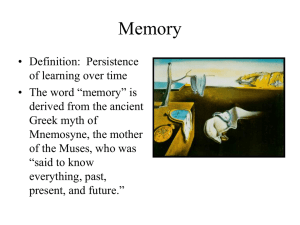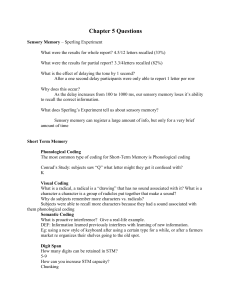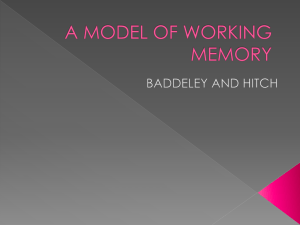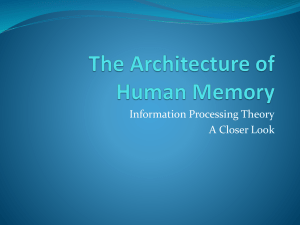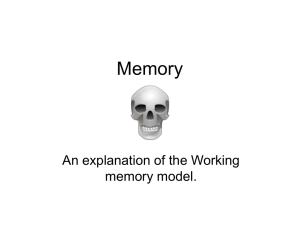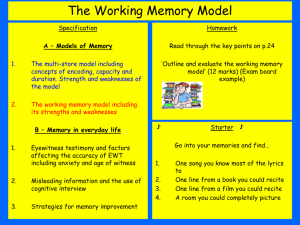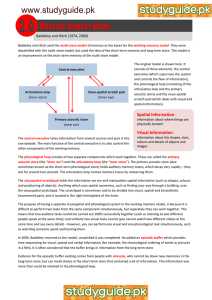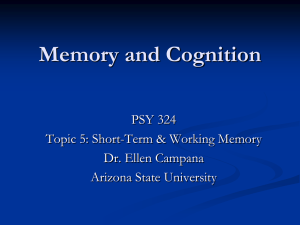Memory Codes
advertisement
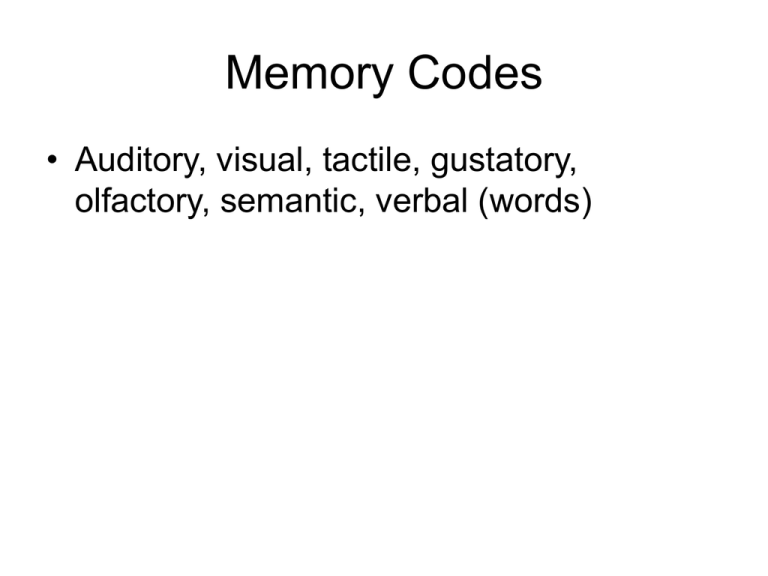
Memory Codes • Auditory, visual, tactile, gustatory, olfactory, semantic, verbal (words) Sensory vs. STM • Sensory memory – ICON – visual format or visual code – ECHO – acoustic code – Generally, code is the same as the sense – E.g., Touch sensory memory tacticle Sensory vs. STM • What is the code in STM? • Example study (Conrad, 1964) – Used the span task with letters (presented visually) – Very accurate, but occasionally make mistakes he studied the mistakes (when people remember the wrong letter) Confusion mistakes (confusions) • When you remember the wrong letter, – The wrong letter could look like the letter you saw (visual confusion) • E.g., saw L I – The wrong letter could sound like the letter you saw (acoustic confusion) • E.g., saw P T Results • The vast majority of the mistakes were acoustic confusions • Conclusion STM involves acoustic coding • More generally, acoustic coding is common in short-term memory Atkinson-Shiffrin model (1968) • Model of different memories, their codes, and the processes that access the memories • 3 kinds of memory: – Sensory memory – Short-term memory – Long-term memory Flow of memory • Stimulus from environment • stimulus represented in sensory memory (small capacity, extremely brief duration, code is related to the sense [sensory modality]) • stimulus represented in STM (limited capacity, duration up to about 30 seconds, primarily acoustic code) Flow (cont.) • stimulus represented in LTM (infinite capacity [unlimited], infinite duration, variety of codes) • Aka, the “modal model” • See p. 83 for the diagram of this information processing model Another model of short-term memory • Emphasizes the “working” aspect of memory • Called the Working Memory Model (Baddeley, 1986) • Three components to short-term memory: phonological loop, visuospatial sketchpad, central executive Phonological loop • Hold small amount of information in terms of the way it sounds (acoustic coding) – Phonological sounds come from your language – Acoustic = any sounds • Can hold about 2 seconds worth of phonological information at a time (like an audiotape) [capacity] Visuospatial sketchpad • Like a drawing tablet, with only so many things drawn at a time (limited capacity, visual code) • Holds not only the visual information (what things look like), but also how they are arranged (spatial information) Central executive • Monitors, keeps track of, arranges information, etc. within the phonological loop and the visuospatial sketchpad • E.g., central executive involved in moving information from phonological loop to LTM • Also, converts information from one code to another Diagram of WM Model Phonological Loop Central Executive VSS Current state of A-S & WM Model • A-S: still most commonly accepted model of memory, including outside of cognitive psychology, and out into general public • WM: used outside of cognitive psychology, especially in neuropsychology or neuroscience
